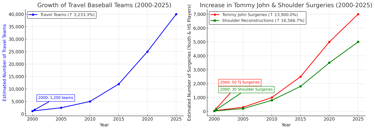Youth Baseball Injuries and Employability Data
The Decline of Career Readiness & Employability Since 1990
Over the past three decades, modeled data based on the National Association of Colleges and Employers (NACE) career readiness competencies—combined with trends from employer surveys and workforce research—show a consistent decline in employer satisfaction across every major indicator of career readiness and employability.
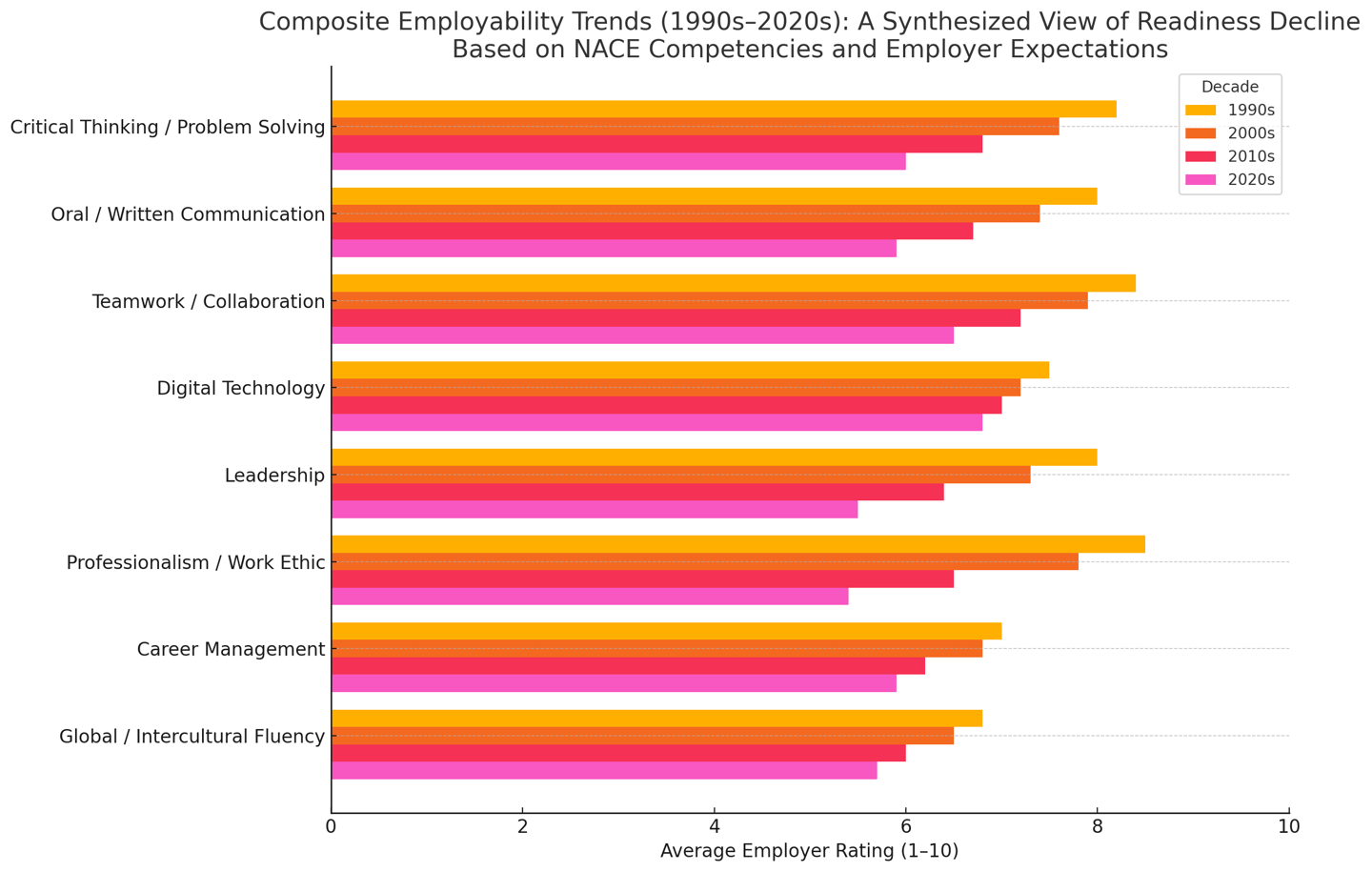

From 1990s to 2020s, the average Employability Score has dropped by 1.97 points, representing a 25.2% decrease in career readiness and real-world employability.
Overall Decline in Employability
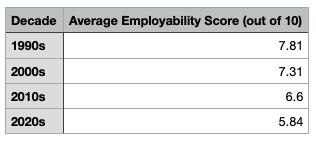

Employers are not just frustrated—they’re actively lowering hiring standards or struggling to fill roles because new workers increasingly lack key traits like work ethic, communication skills, and leadership.
Professionalism and leadership have taken the steepest hits, aligning perfectly with what many employers say they’re missing most in today’s entry-level talent pool.
The data backs what you're seeing on the ground: today’s young adults aren’t less intelligent—they’re less prepared for the real world of work.
What This Means:
National Association of Colleges and Employers. (2023). Career readiness competencies. Retrieved from https://www.naceweb.org/career-readiness/competencies/
Young, L. (2025). Modeled trends in career readiness competency ratings based on NACE framework and employer survey data (1990s–2020s) [Unpublished analysis]
Travel Ball Surge & Surgery Surge Correlation
Citations & Data Sources for Arm Injury Increase (Youth & High School Baseball Players)
Dr. James Andrews (2000 Report)
Found that Tommy John surgeries were increasing among youth, making up 18% of all procedures in that year
URPT Sports Medicine Blog (2007–2011 Study)
Reported that 57% of all Tommy John surgeries were performed on athletes aged 15–19, indicating a major shift toward adolescent injury trends.
NBC26 News (2023 Report)
Stated that 35%+ of MLB pitchers have undergone Tommy John surgery, with injury trends mirroring down to younger age groups in youth and high school baseball.
High School Injury Rate Study (2005–2015)
The Journal of Athletic Training found a 1.39 per 10,000 exposure rate for shoulder injuries in high school baseball players.
American Academy of Orthopaedic Surgeons / University Orthopaedic Associates (UOA)
Reports a fivefold increase in serious elbow and shoulder injuries in youth baseball since 2000.
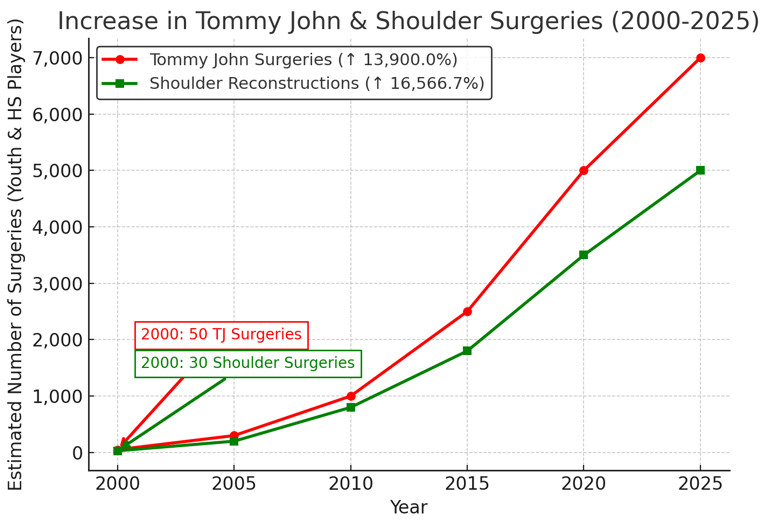

Chart is a representative estimate of the combined data of citations listed below.
Citations & Data Sources On Travel Baseball Growth
Ballparks of America
Reports that travel baseball expanded from approximately 12 teams in 2000 to nearly 100 by 2014, with continued explosive growth through the 2020s.
Travel Ball Economics Report
Highlights the financial impact and rapid growth of travel baseball for cost, participation, and team count
ESPN Report – Youth Sports Participation Trends (2018)
Indicates a broad national rise in organized and competitive youth baseball.
World Baseball Softball Confederation (WBSC)
2023, U.S. baseball participation hit a record high of 16.7 million, reflecting the overall rise in organized youth baseball

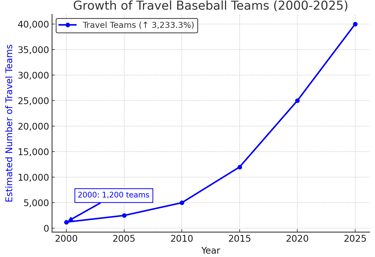
Chart is a representative estimate of the combined data of citations listed below.
Available data suggests a notable correlation between the rise in travel baseball participation and the increase in arm injuries among youth and high school athletes. As the number of travel teams has expanded significantly since 2000, studies have also documented a marked increase in Tommy John and shoulder reconstruction surgeries in the same age group. While further research is needed to establish causation, these parallel trends raise important questions about the impact of year-round play, increased workloads, and early sports specialization on developing athletes.

